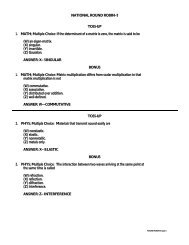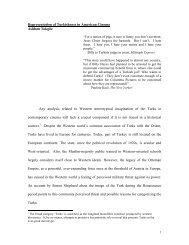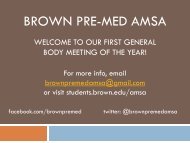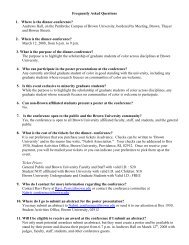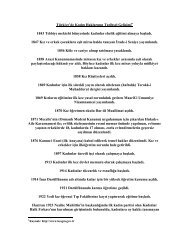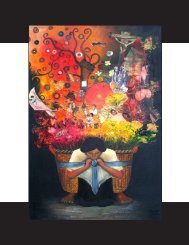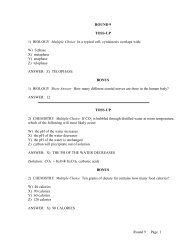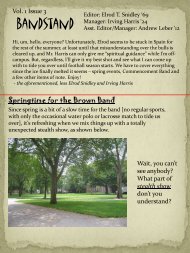Download as a .pdf file - Brown University
Download as a .pdf file - Brown University
Download as a .pdf file - Brown University
You also want an ePaper? Increase the reach of your titles
YUMPU automatically turns print PDFs into web optimized ePapers that Google loves.
ZIGGURAT<br />
prophecy that dictated that all old cattle and grain must be destroyed<br />
naturally aligns the Cattle-Killing movement with this definition of<br />
cat<strong>as</strong>trophic millennialism. Interesting and more complex, however, are<br />
the roots of Nongqawuse’s claim that the “new condition” that would be<br />
ushered in would be brought by the resurrection of the dead ancestors.<br />
It is likely that this particular <strong>as</strong>pect of the prophecy is intimately<br />
intertwined with the dawn and spread of Christianity in Xhosaland, and<br />
its complex relationship with indigenous Xhosa beliefs, particularly those<br />
surrounding relationships with ancestors. Christian missionary work<br />
began in Xhosaland in 1817, yet yielded few real conversions. Elements<br />
of Christian doctrine did, however, disperse and absorb into Xhosa<br />
society. 9 The integration of Christian ide<strong>as</strong>, particularly those relevant to<br />
Nongqawuse’s prophecy, into the traditional Xhosa belief system is in fact<br />
the product of the greatest of coincidences. A smallpox epidemic in the<br />
1770s led to the disruption of Xhosa funeral practices, <strong>as</strong> healthy family<br />
members were so afraid to touch the dead that they instead drove the dying<br />
out of the homestead, thereby eliminating the possibility of a traditional<br />
burial. This practice w<strong>as</strong> perpetuated in order to avoid the “religious<br />
necessity of abandoning a homestead where a death had occurred.” 10 This<br />
new practice, in combination with the incre<strong>as</strong>ing overcrowding of the<br />
population, dismantled traditional spatial distinctions between the worlds<br />
of the living and the dead.<br />
Traditionally in Xhosa society, ancestors inhabited the space where<br />
they died, and from their parallel spirit world were thought to actively<br />
affect the living. Ancestors could not, however, cross from the spirit to<br />
the living world. With the dawn of colonialism, the intersection of Xhosa<br />
beliefs about the active role of the ancestors and Christian beliefs about<br />
resurrection were melded into a new worldview for the Xhosa people.<br />
This altered practice created the intellectual room in which ide<strong>as</strong> such <strong>as</strong><br />
the concept of resurrection <strong>as</strong> a return of the ancestors could be integrated<br />
into Xhosa beliefs. It w<strong>as</strong> most likely Mhlakaza, who w<strong>as</strong> in fact the first<br />
Anglican Xhosa, who introduced these ide<strong>as</strong> to Nongqawuse:<br />
Since Mhlakaza w<strong>as</strong> conversant with the concept of Christian<br />
resurrection, it seems not unlikely that this particular element,<br />
generally absent from traditional religions, w<strong>as</strong> either clarified or<br />
initially, possibly even prior to Nongqawuse’s experience, suggested



